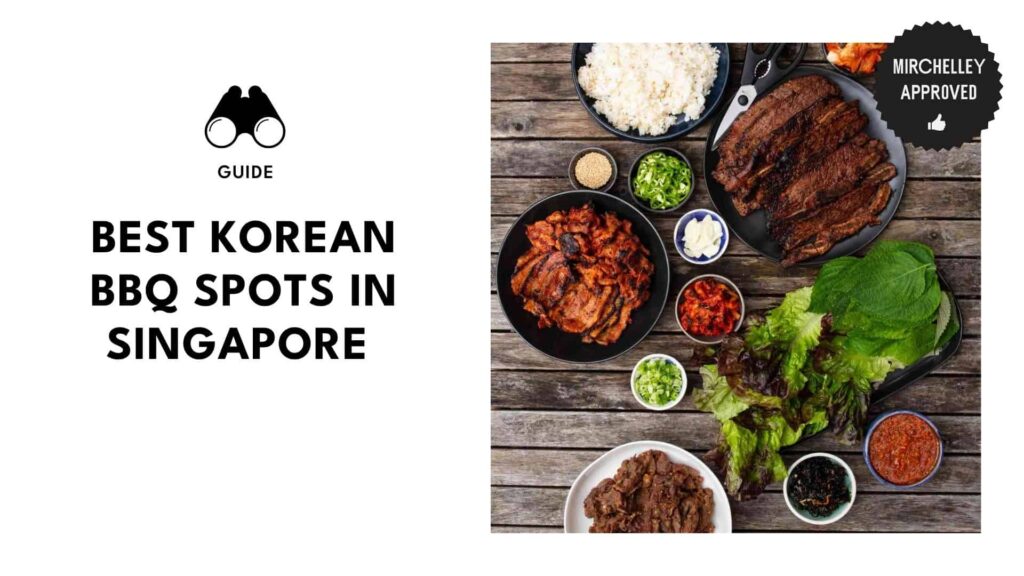Categories > Guides and Tips

These Singapore artists are among the most revered in the art scene!
Some are born with a paintbrush in one hand and a palette in the other, while mere mortals like us have only reached the realm of stick figures and could only ever dream of drawing a perfect circle.
Others can sculpt a life-size human figure out of thin air like the Gods that they are, while we’re stuck making paper airplanes sometimes out of boredom.
Regardless of the medium, Singapore has been blessed with such good hands and brilliant minds that it’s almost a sin not to recognize and appreciate them, and it’s our job to bring them to light!
Lim Tze Peng
Styles/Media: Chinese calligraphy, Chinese ink drawings, paintings, Hutuzi (muddled) writing, Nanyang art
Lim Tze Peng is one of the most renowned artists to have ever graced Singapore’s art scene for decades.
With highly honed skills in Chinese calligraphy and Chinese ink drawings, he’s up there as one of the masters of the visual art form.
By meticulously practicing and pouring in hours of calligraphy, the 102-year-old September-born legendary artist developed his own style of writing called “hutuzi”, otherwise known as muddled writing.
Aside from calligraphy, his popular artworks in painting and Chinese ink drawings are mostly themed according to Singapore’s post-independence period.
This can be seen in his works like “Daily Hustle at Chinatown” and “Bustling Little Market”.
Even his inspirations have shown remarkable growth over time, from simply painting what he sees to now painting what he reflects on.
This shift has enabled him to continuously do what he does best in this day and age.
Chua Mia Tee
Styles/Media: Realist oil paintings, social realism, drawing, sketching, watercolour
Those following the local art scene religiously would know about Chua Mia Tee and his revered oil paintings that are created in the style of social realism.
While his portrait painting of his wife took center stage at the National Gallery Singapore, his other works were known to capture the 50s and 60s life and social conditions of the masses.
Other popular oeuvres of Chua Mia Tee include Epic Poem of Malaya (1955) and National Language Class (1959), both of which showcase his skill in the medium of oil on canvas.
He is also notable for having painted portraits of many Singaporean presidents, politicians, and businessmen in his time, making him a national artist who’s in great demand.
Ong Kim Seng
Styles/Media: Watercolour art, realist paintings, plein-air paintings
When it comes to any kind of watercolour artwork, Ong Kim Seng is one of the first Singaporean artists that come to mind.
With his amount of knowledge and practice, landscapes or any similar subject he finds interest in comes to life on canvas.
Ong Kim Seng not only paints in the realm of realism and post-impressionism but is also self-taught in the many aspects of visual art, making his works more impressive to the eye.
Aside from his feats in watercolour art, he is also an avid “plein-air” painter, a style of painting reminiscent of 19th-century outdoor art that creates a sense of open air.
With this, Mr. Ong himself really is a breath of fresh air through his works, and any paying art lover who discovers him would commission him in a heartbeat.
Tan Swie Hian
Media credit: @julicyy
Styles/Media: Chinese calligraphy, Chinese poetry, novels, oil painting, Chinese ink painting, acrylic painting, contemporary sculptures
A recipient of the Singapore Cultural Medallion, Tan Swie Hian is a multidisciplinary artist who deserves every bit of praise that he has received through his numerous works and then some.
This 81-year-old Singaporean icon initially delved into the discipline of writing with poetry works such as The Giant (1968) before he really boomed as a painter.
With a background in painting with oil, acrylic, and Chinese ink, he proceeded to dish out works like Portrait of Bada Shanren (2013) and When the Moon is Orbed (2012).
These two notable pieces sold at a Beijing auction for a whopping S$4.4 million and $3.7 million.
His works, which were made with intellectual and artistic prowess, earned him recognition even outside Singapore.
This includes getting several awards in China and receiving France’s Officer in the National Order of the Legion of Honor civilian award.
Cheong Soo Pieng
Media credit: @mlgbagby
Styles/Media: Nanyang art, modernism, Western art, oil paintings, sculptures
If you are ever curious to know how the “Nanyang” art style is actually painted, then check out some works of the late Cheong Soo Pieng, a key pioneer of the art movement in Singapore.
While Nanyang has been around since the 1940s, his particular style stood apart because of his favorite formula of merging Western with East Asian art practices.
This led to a blending of unique shapes, concepts, and colours that is still very much relevant and appreciated today.
One great example of this is his use of elongated limbs and almond faces to depict Balinese women in Southeast Asia.
Due to his love for experimentation, current modernists in Singapore have him to thank for, as who knows what style of art can be birthed from a mind that isn’t afraid to think outside the box.
Liu Kang
Media credit: @jacqueline.chong.7587
Styles/Media: Nanyang art, Chinese traditional ink painting, Western painting, Balinese-themed figurative painting
Another well-known figure that initially propelled the Nanyang art style in the 1930s is Liu Kang, and no, we don’t mean the Mortal Kombat character.
With over a thousand artworks on display at the Singapore Art Museum, Liu Kang was a powerhouse of an artist with backgrounds in Chinese ink painting and Western painting.
Similar to his Nanyang art buddy, Cheong Soo Pieng, Liu was fond of creating Balinese-themed figurative paintings as seen in Offerings (2003) and Life by the River (1975)
These two works perfectly illustrate the vibrant colors that contrast the simple shapes used.
If one thing’s for certain, it’s that Liu Kang loved the outdoors in Southeast Asia enough to portray the simple everyday life of the people and immortalize them on canvas.
Lim Leong Seng
Media credit: @yanggallery
Styles/Media: Chinese painting, sculptures, bronze, collage, steel, oil painting, ink painting, silkscreen painting, mixed media
Lim Leong Seng is as versatile as they come due to his skillset in both the painting and the sculpting departments.
Notable for being an experimental artist, Lim Leong Seng is skillful in his combination of different media to mold the subject into form, although bronze is mostly his go-to medium.
One of his most famous bronze sculptures is none other than the Mid-autumn Lantern Procession (2001), with its life-size version now displayed at Telok Ayer Green.
Such a work demonstrated Lim’s fascination with the life of early immigrants in Singapore, which carries over to his other sculptures and even paintings.
Speaking of paintings, he’s also known for having made several oil paintings, ink paintings, and silkscreen paintings, all of which he displayed in his “Journey from the Wilderness” exhibition.
Tang Da Wu
Media credit: @shanghartgallery
Styles/Media: Sculptures, paintings, performance art, installation art, contemporary art
Tang Da Wu is the middle point where art and entertainment meet for a truly mesmerizing experience and newfound appreciation.
Because of his unique approach to art, Tang Da Wu can effortlessly grab the attention of onlookers and push the boundaries of what “visual” art can become.
This is “performance art” in a nutshell, which he uses to his advantage quite well, simultaneously blending in bits and pieces of his work with movement to tell a story.
Now, while he obviously titles his work, the meaning behind it can vary from one beholder to another since art is highly subjective, after all.
You can even say the same thing about his numerous installation artworks, which can attract and inspire many art lovers to let their imaginations run wild.
Georgette Chen
Media credit: @zonghahn
Styles/Media: Nanyang art, impressionism, post-impressionism, fauvism, oil paintings, modern Singaporean art
On the topic of top Singaporean artists you should know, let’s not forget about the one and only Georgette Chen, another highly acclaimed artist of the Nanyang style.
As a first-generation Nanyang artist, Georgette Chen is a commonly discussed figure in the scene due to becoming a teacher at Nanyang Academy of Fine Arts.
However, this was not before her travels across Western countries like the US, the UK, and France, where the foundation for her love of the arts was initially built.
Even though her style also consisted of impressionist pieces and post-impressionist portraits, she is still mostly known for her Nanyang oil-on-canvas works like Sweet Rambutans (1965).
It is through her various artworks and being both a pioneer of Nanyang art and modern Singaporean art that she gained recognition and was awarded the Cultural Medallion.
Fan Shao Hua
Media credit: @lefocker
Styles/Mediums: Oil painting, creased paper background, ink splash, realism, representational art
It’s a common pattern that great artists who develop their own styles are not afraid to do some experimentation, and this applies to the story of award-winning artist Fan Shao Hua.
Claiming one international art award after another, Fan Shao Hua’s humble beginnings started with painting subjects like humans, birds, and flowers with ink.
Later on, this naturally progressed to practicing oil painting, which is now one of his mainstays in his collection of masterpieces.
However, since he is a man of experimentation, as previously mentioned, his style is a hybrid cross between Western and Chinese art styles, and the outcome couldn’t be any more elegant.
His “Lotus” series is a perfect example that applies these two contrasting styles, all while also utilizing the “creased paper” technique to give more background texture.
What is the most famous artwork in Singapore?
Several famous artworks in the Singaporean scene include the National Language Class (1959) oil-on-canvas painting by Chua Mia Tee and the Life by the River (1975) oil-on-canvas painting by Liu Kang.
Art legend and Cultural Medallion Awardee Lim Tze Peng is famous for having created many Chinese ink paintings and Chinese calligraphy works throughout his lengthy career.
Famous Nangyang artist Georgette Chen has also created many oil paintings and impressionist portrait paintings that are worth seeing.
What is the name of Singapore art?
The most prominent and significant kind of Singaporean art is the Nanyang style, which is an art movement started by Chinese immigrant painters during the 1940s to 1960s in Singapore.
The subject matter of the Nanyang art style mainly comprises anything found in the Southeast Asian landscape. The style also commonly combines Western and Eastern techniques.
As an example, Georgette Chen’s Sweet Rambutans showcases baskets of tropical fruit found in Southeast Asia while also using the oil-on-canvas medium.
Nanyang art was also often used to depict human figures as found in numerous Balinese-themed paintings by Nanyang artists Liu Kang and Cheong Soo Pieng.
Who is the old artist in Singapore?
At 102 years old, artist Lim Tze Peng is currently the oldest and one of the most well-known artists in Singapore’s art scene.
Even at his age, the oldest living Singaporean artist Lim Tze Peng still continues to be a hot topic among fans of his Chinese calligraphy and ink drawings.




